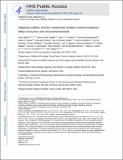| dc.contributor.author | Hodis, Eran | |
| dc.contributor.author | Triglia, Elena Torlai | |
| dc.contributor.author | Kwon, John YH | |
| dc.contributor.author | Biancalani, Tommaso | |
| dc.contributor.author | Zakka, Labib R | |
| dc.contributor.author | Parkar, Saurabh | |
| dc.contributor.author | Hütter, Jan-Christian | |
| dc.contributor.author | Buffoni, Lorenzo | |
| dc.contributor.author | Delorey, Toni M | |
| dc.contributor.author | Phillips, Devan | |
| dc.contributor.author | Dionne, Danielle | |
| dc.contributor.author | Nguyen, Lan T | |
| dc.contributor.author | Schapiro, Denis | |
| dc.contributor.author | Maliga, Zoltan | |
| dc.contributor.author | Jacobson, Connor A | |
| dc.contributor.author | Hendel, Ayal | |
| dc.contributor.author | Rozenblatt-Rosen, Orit | |
| dc.contributor.author | Mihm, Martin C | |
| dc.contributor.author | Garraway, Levi A | |
| dc.contributor.author | Regev, Aviv | |
| dc.date.accessioned | 2023-01-11T18:29:56Z | |
| dc.date.available | 2023-01-11T18:29:56Z | |
| dc.date.issued | 2022 | |
| dc.identifier.uri | https://hdl.handle.net/1721.1/147070 | |
| dc.description.abstract | <jats:p>Establishing causal relationships between genetic alterations of human cancers and specific phenotypes of malignancy remains a challenge. We sequentially introduced mutations into healthy human melanocytes in up to five genes spanning six commonly disrupted melanoma pathways, forming nine genetically distinct cellular models of melanoma. We connected mutant melanocyte genotypes to malignant cell expression programs in vitro and in vivo, replicative immortality, malignancy, rapid tumor growth, pigmentation, metastasis, and histopathology. Mutations in malignant cells also affected tumor microenvironment composition and cell states. Our melanoma models shared genotype-associated expression programs with patient melanomas, and a deep learning model showed that these models partially recapitulated genotype-associated histopathological features as well. Thus, a progressive series of genome-edited human cancer models can causally connect genotypes carrying multiple mutations to phenotype.</jats:p> | en_US |
| dc.language.iso | en | |
| dc.publisher | American Association for the Advancement of Science (AAAS) | en_US |
| dc.relation.isversionof | 10.1126/SCIENCE.ABI8175 | en_US |
| dc.rights | Creative Commons Attribution-Noncommercial-Share Alike | en_US |
| dc.rights.uri | http://creativecommons.org/licenses/by-nc-sa/4.0/ | en_US |
| dc.source | PMC | en_US |
| dc.title | Stepwise-edited, human melanoma models reveal mutations’ effect on tumor and microenvironment | en_US |
| dc.type | Article | en_US |
| dc.identifier.citation | Hodis, Eran, Triglia, Elena Torlai, Kwon, John YH, Biancalani, Tommaso, Zakka, Labib R et al. 2022. "Stepwise-edited, human melanoma models reveal mutations’ effect on tumor and microenvironment." Science, 376 (6592). | |
| dc.contributor.department | Massachusetts Institute of Technology. Department of Biology | en_US |
| dc.relation.journal | Science | en_US |
| dc.eprint.version | Author's final manuscript | en_US |
| dc.type.uri | http://purl.org/eprint/type/JournalArticle | en_US |
| eprint.status | http://purl.org/eprint/status/PeerReviewed | en_US |
| dc.date.updated | 2023-01-11T18:06:11Z | |
| dspace.orderedauthors | Hodis, E; Triglia, ET; Kwon, JYH; Biancalani, T; Zakka, LR; Parkar, S; Hütter, J-C; Buffoni, L; Delorey, TM; Phillips, D; Dionne, D; Nguyen, LT; Schapiro, D; Maliga, Z; Jacobson, CA; Hendel, A; Rozenblatt-Rosen, O; Mihm, MC; Garraway, LA; Regev, A | en_US |
| dspace.date.submission | 2023-01-11T18:06:14Z | |
| mit.journal.volume | 376 | en_US |
| mit.journal.issue | 6592 | en_US |
| mit.license | OPEN_ACCESS_POLICY | |
| mit.metadata.status | Authority Work and Publication Information Needed | en_US |
